Otomí in Mexico City celebrate four years of occupation
For four years, the former state "Institute for Indigenous Affairs" (INPI) in Mexico City has been occupied.
For four years, the former state "Institute for Indigenous Affairs" (INPI) in Mexico City has been occupied.

For four years, the former state "Institute for Indigenous Affairs" (INPI) in Mexico City has been occupied. Now renamed "Casa de los Pueblos Samir Flores" (House of the Peoples Samir Flores), it has become a center of indigenous resistance against social marginalization and destructive megaprojects. Additionally, it serves as a hub for the EZLN's support network in the capital.
October 12th marked the fourth anniversary of the occupation, but it is also the 532nd anniversary of the colonization of Latin America—a day to celebrate the resistance that has managed to fight for and preserve indigenous cultures, languages, ways of life, and self-governance.
But how did it come to be that the Mexican government's Institute for Indigenous Affairs was occupied by the Otomí people?

The Background
Joaquina, one of the residents of the occupation, told me that many Otomí, including her parents, came to Mexico City from Santiago Mexquititlán in the 1980s.
"When they arrived here, they had no place to stay and had to sleep on the streets. When it rained or thieves passed by, our parents and their children were in great danger." When the 1985 earthquake damaged and destroyed many buildings in the city, they took over some of the vacant properties and made them habitable again. "Our community organized and decided to occupy these empty spaces in Colonia Juárez and Colonia Roma to at least provide a roof over their children’s heads." She grew up in one of these occupations. However, the 2017 earthquake changed everything—the houses completely collapsed, and from that moment on, they lived in tents on the street in front of their former homes.

"We suffered a lot because we didn’t have water. We had to walk far to fetch water so that we could bathe our children so they could go to school." She points to a tree by the roadside and explains that they got water from wherever they could find it—often from the irrigation of parks and roadside trees.
The Occupation
Their attempts to find other buildings or negotiate a loan with the state for a new one were unsuccessful. They were attacked by neighbors, and once, their camp was violently dismantled by a hundred police officers, leaving around 20 injured. The conditions were unbearable.
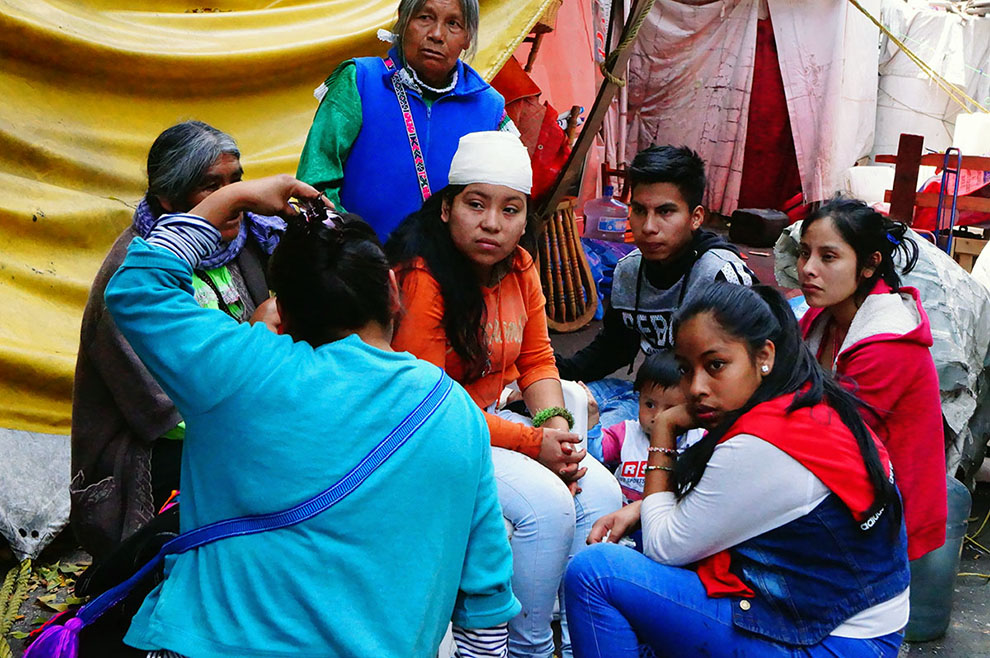
"We had been outside for a long time. I think we had already lived there for about three years, and it was the rainy season. We told the government to take our side, as we were suffering, our children were suffering, and we couldn’t sleep because the heavy rain soaked the tents and everything in them. But unfortunately, we had to stay there because we had no other place to go. During this time, the community continued to organize and hold meetings. In our assembly, we said, 'They will never defeat us.' We must keep going, and that's why we, as a community, decided to take over this building."
On the morning of October 12, 2020, they entered the INPI offices—not to negotiate, but to take them over.
Initially, the occupation was only intended to last for one or two weeks, but the supposedly progressive, left-wing government didn’t respond. To this day, the Otomí have not been offered a loan or alternative housing, so they have stayed.
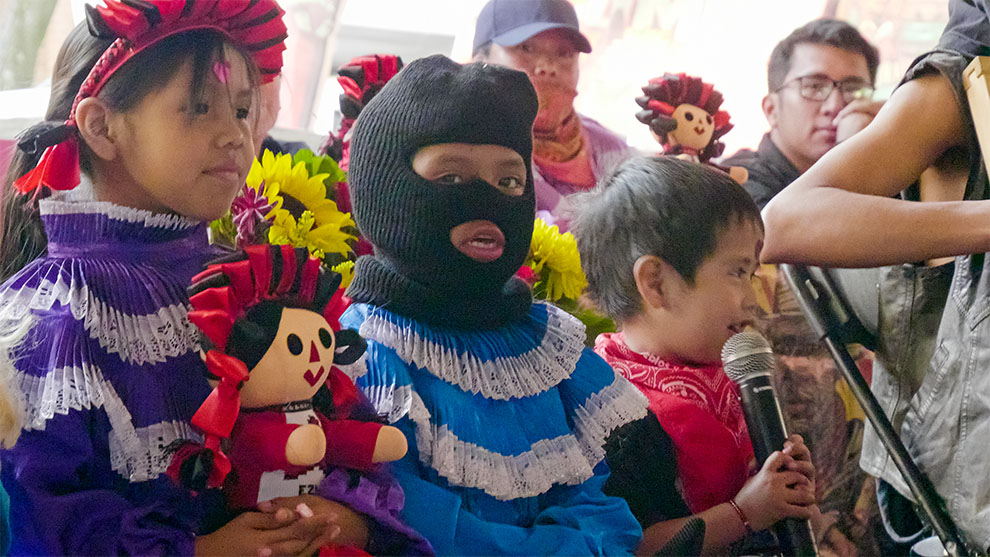
More Than Just Housing
The community's children perform a play to celebrate the four years of the occupation—and the 532 years of indigenous resistance. For 532 years, the Otomí have not lost their culture and language. They celebrate the resistance they have built over these four years. On the other hand, it also highlights the city's failure—four years of inaction. And even more years in which the government has ignored the Otomí’s basic right to decent housing. But their struggle is about more than just meeting basic needs.
"They didn’t care about the indigenous peoples; on the contrary. That’s why we decided to truly use this so-called Indigenous Institute for the peoples." "Here, he (Adelfo Regino Montes, the head of INPI) also gave the approval. He signed off on the construction of destructive megaprojects like the Maya Train, the Interoceanic Corridor, and the Santa Lucía Train. The Maya Train, the comrades from Oaxaca and Puebla, whose water was stolen, right? That’s why we were angry and decided to occupy this building, to tell them to stop. All the different collectives and peoples from different regions should come here, speak their word, and share their struggles. Every people, and we still uphold this, this is now the House of the Peoples."
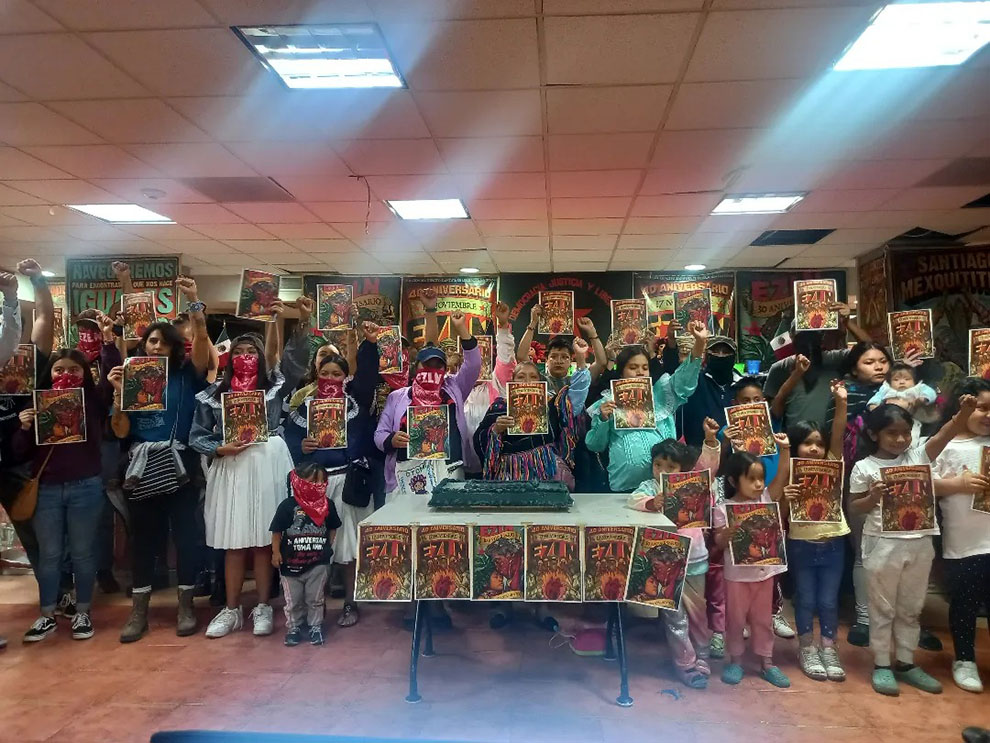
The former office building, now the "Casa de los Pueblos Samir Flores," serves as a gathering place and a center for political organization for many indigenous peoples resisting the Mexican government and international corporations. Events of the National Indigenous Congress (CNI) are held here, as well as meetings to organize against megaprojects like the Maya Train and the planned Interoceanic Corridor, the movement for water, and many others. The occupation also coordinates the EZLN support network, the indigenous paramilitary group from southern Mexico that launched an armed uprising for the self-determination of the peoples and a dignified life in 1994. From a state agency meant to control and assimilate, the building has become a center of indigenous resistance.
Repression and Attacks
In these four years, the government hasn’t simply stood by and watched as its former building was taken over. "They cut off our electricity so that we would leave the building; they’ve done this six or seven times." When the power is out, the residents can’t use the stove, the refrigerator stops working, there’s no water, and the toilets don’t function. "It limits us a lot, that we can’t go to the bathroom, that the sewage pump doesn’t work. But even then, we show them that we will continue, even if they do a thousand things to us. We will continue resisting."
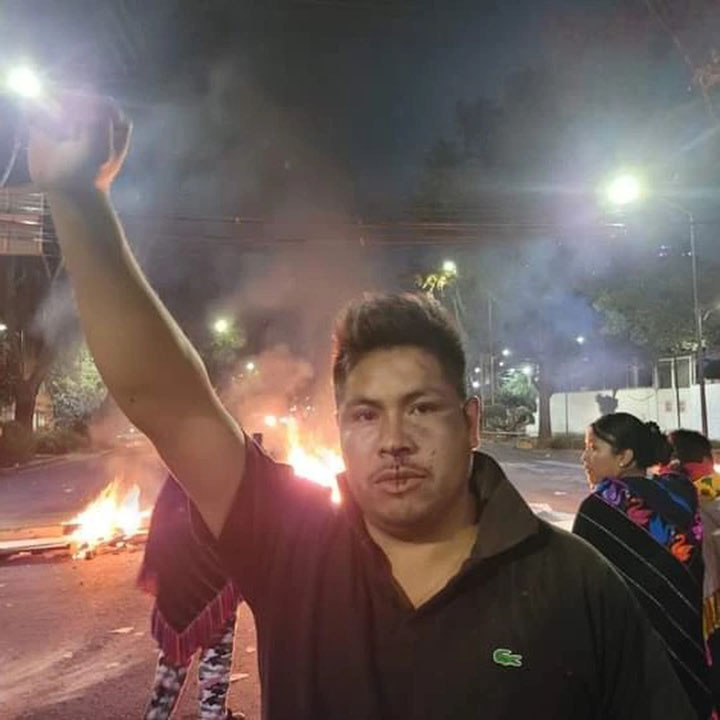
The strongest repression came last year. Just days after the 3rd anniversary, the police attempted to clear the occupation with about 500 riot police. The quickly mobilized resistance networks prevented this, but 20 residents were injured. That same night, masked motorcyclists drove by the house and fired shots at residents standing outside. Fortunately, none were hit. But the shock remains.
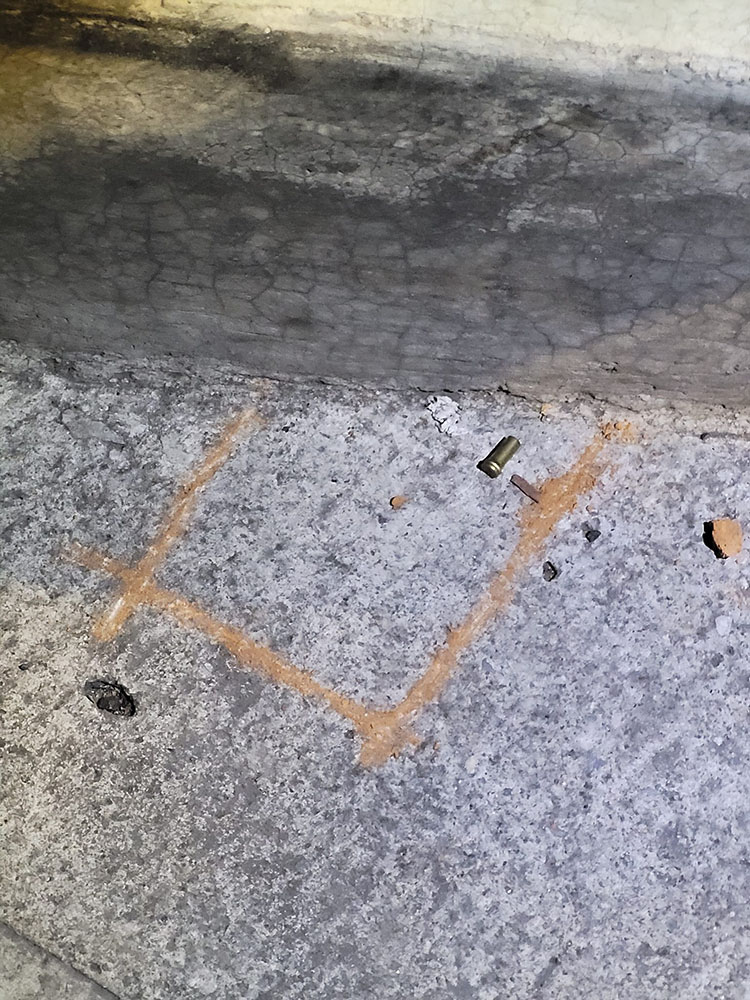
The Future of the Occupation
"I don’t want my son to experience the same conditions we lived in, where we had no water, electricity, or sewage on the properties. I don’t want my children to live without these things. I want them to have a home so they can live well. I don’t want the same story to repeat itself, the one I lived through." Their goal, the community's goal, is to finally secure decent housing. No more half-collapsed houses without water and electricity, no more tents, and no more occupied office buildings. "We are not exhausted by staying here, but we also want a place where we can finally live in peace, because they have tried to evict us here."
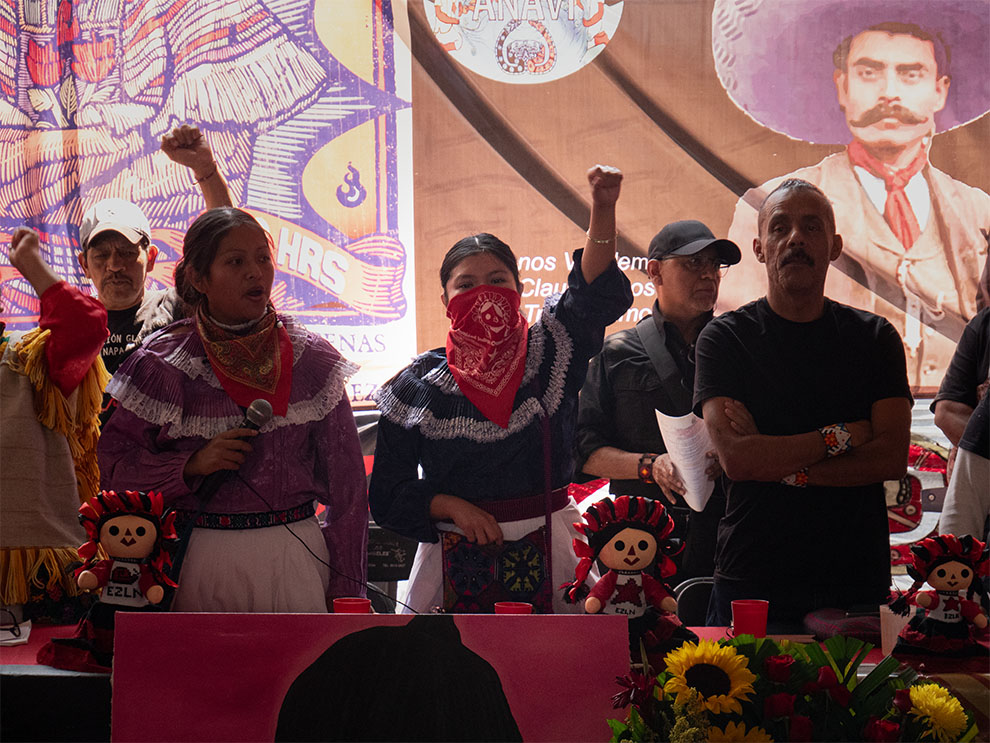
On October 23rd, they have a meeting with the newly elected city administration. Their goal is to finally establish a dialogue to secure a loan for a new property. It could mean that the Otomí finally move into proper housing after decades, though the response of previous governments, regardless of party, leaves them with little optimism.